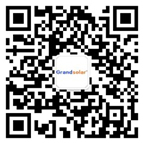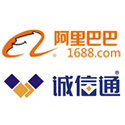Classification and evaluation of main technical performance of inverter
2016-11-8 3540 Clicks 
There are many kinds of inverters, which can be classified according to different methods.
1, according to the frequency of the inverter output AC power frequency, can be divided into the power frequency inverter, if inverter and high-frequency inverter. Frequency inverter frequency of 50 ~ 60Hz inverter; if the frequency of the inverter is generally 400Hz to 10 kHz; the frequency of the high-frequency inverter is generally more than 10 kHz to MHz.
2, according to the output of the inverter can be divided into single-phase inverter, three-phase inverter and multiphase inverter.
3, according to the direction of the output power of the inverter can be divided into active and passive inverter. Where the inverter output power supply to the industrial power grid of the inverter, known as active inverter; where the output of the inverter power output to a certain power load inverter called passive inverter.
4, according to the main circuit of inverter form, can be divided into single end inverter, push-pull inverter, half bridge inverter and full bridge inverter.
5, according to the type of inverter main switch device, can be divided into thyristor inverter, transistor inverter, field effect inverter and insulated gate bipolar transistor (IGBT) inverter, etc.. And can be summarized as "semi - controlled" inverter and "full control" inverter two categories. The former, does not have the self turn off ability, components in the conduction is out of control, so it is called "half control" type ordinary thyristor that belongs to this class; the latter, with self off ability, no device turn-on and turn off can be controlled by the pole to control it as the "full control", the power field effect transistor and double insulated gate transistor power (IGBT) all belong to this category.
6, according to the DC power supply, can be divided into voltage source inverter (VSI) and current source inverter (CSI). The former, the DC voltage is close to a constant, the output voltage is alternating square wave; the latter, the direct current is nearly constant, and the output current is alternating square wave.
7, according to the inverter output voltage or current waveform points, can be divided into sine wave output inverter and non sinusoidal output inverter.
8, according to the inverter control points, can be divided into frequency modulated (PFM) inverter and pulse width modulated (PWM) inverter.
9, according to the working mode of the inverter switching circuit, can be divided into resonant inverter, fixed frequency hard switching inverter and fixed frequency soft switching inverter.
10, according to the inverter for flow mode, can be divided into load converter and inverter.
The main technical performance and evaluation of inverter
First, the technical performance
1, rated output voltage
In the specified input DC voltage range, it indicates that the rated voltage of the inverter should be able to be output. The stability accuracy of the output voltage rating is generally as follows:
(1) in the steady state operation, the voltage fluctuation range should be limited, for example, the deviation is not more than 3% or 5% of the rated value.
(2) the output voltage deviation should not exceed 8% or 10% of the rated value under the dynamic conditions of load mutation (rated load 0%, 50%, 100%) or other disturbance factors.
2, the output voltage unbalance
Under normal operating conditions, the three-phase inverter output voltage unbalance (reverse component of positive sequence component ratio) should not exceed a specified value, usually expressed in percent, such as 5% or 8%.
3, the output voltage waveform distortion
When the inverter output voltage is sinusoidal, the maximum waveform distortion (or harmonic content) should be specified. The total waveform distortion of the output voltage is typically expressed as the value of the output voltage should not exceed 5% (10% of the single phase output).
4, rated output frequency inverter output AC voltage frequency should be a relatively stable value, usually for power frequency 50Hz. Under normal operating conditions, the deviation should be within + 1%.
5, load power factor
Characterization of the inverter with inductive load or capacitive load capacity. Under the sine wave condition, the load power factor is 0.7 ~ 0.9 (lag), the rating is 0.9.
6, rated output current (or rated output capacity)
The rated output current of the inverter is expressed within the specified load power factor range. Some of the inverter products are given the rated output capacity, whose units are expressed in VA or KVA. The rated capacity of the inverter is the product of the rated output voltage when the output power factor is 1 (i.e., pure resistive load).
7, rated output efficiency
The efficiency of the inverter is the ratio of the output power to the input power under specified operating conditions. The efficiency of the inverter under the rated output capacity is full load efficiency, and the efficiency of the 10% rated output capacity is low load efficiency.
8, protection
(1) over voltage protection: the inverter that has no voltage stability measures should have an output over voltage protection measures to protect the negative section from the damage of the output voltage.
(2) over current protection: over current protection of the inverter, it should be able to ensure that the load short circuit or current exceeds the allowable value in time, so that it can avoid the damage of the surge current.
9, starting characteristics
Characterization of load capacity and dynamic performance of inverter with load. The inverter should be guaranteed to start reliably under the rated load.
10, noise
Transformer, filter inductor, electromagnetic switch and fan in power electronic equipment will produce noise. Inverter normal operation, the noise should not exceed 80dB, small inverter noise should not exceed 65dB.
Two, evaluation
In order to correctly select the inverter for photovoltaic power generation system, the technical performance of the inverter is evaluated. According to the influence of the inverter on the operation characteristics of the main photovoltaic power generation system, Guang Fufa
1, according to the frequency of the inverter output AC power frequency, can be divided into the power frequency inverter, if inverter and high-frequency inverter. Frequency inverter frequency of 50 ~ 60Hz inverter; if the frequency of the inverter is generally 400Hz to 10 kHz; the frequency of the high-frequency inverter is generally more than 10 kHz to MHz.
2, according to the output of the inverter can be divided into single-phase inverter, three-phase inverter and multiphase inverter.
3, according to the direction of the output power of the inverter can be divided into active and passive inverter. Where the inverter output power supply to the industrial power grid of the inverter, known as active inverter; where the output of the inverter power output to a certain power load inverter called passive inverter.
4, according to the main circuit of inverter form, can be divided into single end inverter, push-pull inverter, half bridge inverter and full bridge inverter.
5, according to the type of inverter main switch device, can be divided into thyristor inverter, transistor inverter, field effect inverter and insulated gate bipolar transistor (IGBT) inverter, etc.. And can be summarized as "semi - controlled" inverter and "full control" inverter two categories. The former, does not have the self turn off ability, components in the conduction is out of control, so it is called "half control" type ordinary thyristor that belongs to this class; the latter, with self off ability, no device turn-on and turn off can be controlled by the pole to control it as the "full control", the power field effect transistor and double insulated gate transistor power (IGBT) all belong to this category.
6, according to the DC power supply, can be divided into voltage source inverter (VSI) and current source inverter (CSI). The former, the DC voltage is close to a constant, the output voltage is alternating square wave; the latter, the direct current is nearly constant, and the output current is alternating square wave.
7, according to the inverter output voltage or current waveform points, can be divided into sine wave output inverter and non sinusoidal output inverter.
8, according to the inverter control points, can be divided into frequency modulated (PFM) inverter and pulse width modulated (PWM) inverter.
9, according to the working mode of the inverter switching circuit, can be divided into resonant inverter, fixed frequency hard switching inverter and fixed frequency soft switching inverter.
10, according to the inverter for flow mode, can be divided into load converter and inverter.
The main technical performance and evaluation of inverter
First, the technical performance
1, rated output voltage
In the specified input DC voltage range, it indicates that the rated voltage of the inverter should be able to be output. The stability accuracy of the output voltage rating is generally as follows:
(1) in the steady state operation, the voltage fluctuation range should be limited, for example, the deviation is not more than 3% or 5% of the rated value.
(2) the output voltage deviation should not exceed 8% or 10% of the rated value under the dynamic conditions of load mutation (rated load 0%, 50%, 100%) or other disturbance factors.
2, the output voltage unbalance
Under normal operating conditions, the three-phase inverter output voltage unbalance (reverse component of positive sequence component ratio) should not exceed a specified value, usually expressed in percent, such as 5% or 8%.
3, the output voltage waveform distortion
When the inverter output voltage is sinusoidal, the maximum waveform distortion (or harmonic content) should be specified. The total waveform distortion of the output voltage is typically expressed as the value of the output voltage should not exceed 5% (10% of the single phase output).
4, rated output frequency inverter output AC voltage frequency should be a relatively stable value, usually for power frequency 50Hz. Under normal operating conditions, the deviation should be within + 1%.
5, load power factor
Characterization of the inverter with inductive load or capacitive load capacity. Under the sine wave condition, the load power factor is 0.7 ~ 0.9 (lag), the rating is 0.9.
6, rated output current (or rated output capacity)
The rated output current of the inverter is expressed within the specified load power factor range. Some of the inverter products are given the rated output capacity, whose units are expressed in VA or KVA. The rated capacity of the inverter is the product of the rated output voltage when the output power factor is 1 (i.e., pure resistive load).
7, rated output efficiency
The efficiency of the inverter is the ratio of the output power to the input power under specified operating conditions. The efficiency of the inverter under the rated output capacity is full load efficiency, and the efficiency of the 10% rated output capacity is low load efficiency.
8, protection
(1) over voltage protection: the inverter that has no voltage stability measures should have an output over voltage protection measures to protect the negative section from the damage of the output voltage.
(2) over current protection: over current protection of the inverter, it should be able to ensure that the load short circuit or current exceeds the allowable value in time, so that it can avoid the damage of the surge current.
9, starting characteristics
Characterization of load capacity and dynamic performance of inverter with load. The inverter should be guaranteed to start reliably under the rated load.
10, noise
Transformer, filter inductor, electromagnetic switch and fan in power electronic equipment will produce noise. Inverter normal operation, the noise should not exceed 80dB, small inverter noise should not exceed 65dB.
Two, evaluation
In order to correctly select the inverter for photovoltaic power generation system, the technical performance of the inverter is evaluated. According to the influence of the inverter on the operation characteristics of the main photovoltaic power generation system, Guang Fufa










 service one
service one